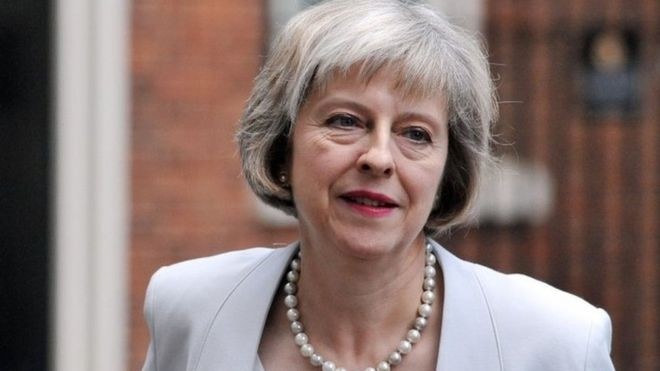Theresa May was born in 1956 in Eastbourne. She worked for the Bank of England before being elected as the Member of Parliament for Maidenhead in London in 1997. She became the chairwoman of the Conservative Party in 2002 and was appointed as the Home Secretary after the party won the 2010 general election. With abundant economic knowledge and political experience, May is expected to help the UK heal the disruptions caused by Brexit and re-establish a path of success for the country.
May has already proved herself a decisive PM. In her opening remarks after her official appointment, the new UK PM said she would continue running the government in the spirit of her predecessor David Cameron, serving the interests of the majority of Britons. The leader of the UK government pledged to ensure the country takes a new active and important role outside the EU. She immediately built a new government and announced the list of cabinet members.
However, taking office as the UK has decided to leave the EU, Theresa May and her associates are faced with an array of thorny problems in terms of politics, economics and foreign affairs. The first difficult task of the new PM is to heal the disagreements within the ruling party and the UK as a whole. The UK has been divided into two groups: those for and those against Brexit. Although the referendum concluded three weeks ago, the divide continues inside the UK. It will be a significant challenge for May to run the country amid the division. The initial signs have shown that May has cleverly healed internal rifts by including a number of Brexit supporters in her new cabinet. She has appointed London Mayor Boris Johnson, one of the strongest supporters of Brexit, to the position of Foreign Secretary, and David Davis, another Brexit campaigner, as minister in charge of negotiating the UK’s exit from the EU.
Another challenge for Theresa May is to lead the new government through the tough Brexit negotiations, aiming to minimise the damage caused by Brexit as the EU has considered the UK as “a quitter” in the process of regional connection. Only a few hours after May’s taking office as the UK PM, many EU leaders were already urging her to launch the process of completing the UK’s exit from the union. European Commission President Jean-Claude Juncker called on May not to delay negotiations to facilitate Brexit. President of the European Parliament Martin Schulz, French President François Hollande and Belgian PM Charles Michel also urged the new UK PM on the issue. In addition to negotiating with the EU, the UK will have to sort out the other host of problems that will come with living outside of the EU. Analysts say that after Brexit, the position of the UK is between the EU and the US. For example, the UK will become the “third party” in the Trans-Pacific Partnership which is being negotiated between Europe and the US.
PM Theresa May will be also challenged to ensure stable economic growth as the Brexit shock damages the country’s economic growth. The British pound has dropped over 20% in value over the past weeks. The Bank of England alerted that the UK’s financial stability is faced with numerous challenges. Meanwhile, the International Monetary Fund was also pessimistic about the UK’s economy, forecasting that the country’s GDP could fall 1.5-4.5% by 2019 as a result of Brexit.
With the challenges besieging the UK, newly-appointed PM Theresa May faces a thorny journey in leading the country through Brexit.
















